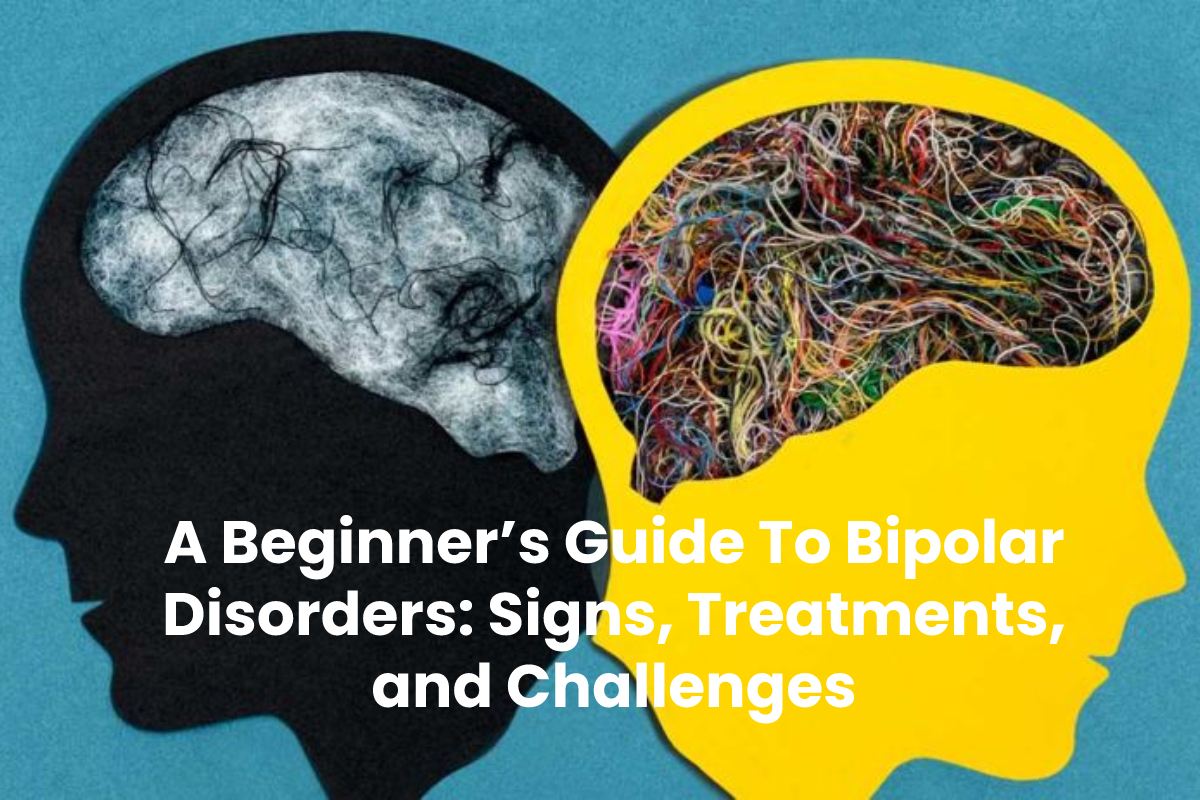
A Beginner’s Guide To Bipolar Disorders
Bipolar disorders can affect people and those around them. If you or someone you know might have it, this guide may be able to help. We’ll review the signs, treatments, and challenges so you know what to expect going forward.
If you need help, such as a proper diagnosis and treatment options, The Heights Treatment can help. You can get more information by visiting their website at https://theheightstreatment.com/. Our experts and professionals will provide you with whatever you need to live life while dealing with bipolar disorder.
Let’s start this guide by explaining what bipolar disorders are and how they can be diagnosed.
Table of Contents
What Is Bipolar Disorder?
Bipolar disorder is also known as manic depression. One of the main characteristics of this disorder is that it features mood changes that are severely high and low. It also includes changes in behavior, thought process, energy levels, and sleep patterns.
A person that has bipolar disorder will go through numerous periods of different moods. These will include feeling energetic and very happy. In one other period, they’ll feel sad and hopeless.
They may often feel tired during this period as well. However, there are periods where they will feel normal. The name ‘bipolar’ is given because of the inclusion of high and low moods like ‘poles’.
The different types of Bipolar disorders
There are three known types of bipolar disorder. Here’s what they are:
- Bipolar I Disorder: This features erratic behaviors with up and down periods. Up periods will last about a week and you may need medical care. The down periods will last about two weeks.
- Bipolar II Disorder: Less extreme version of Bipolar I disorder. You will still experience erratic behaviors, including high and low points.
- Cyclothymic disorder: includes depressive and manic behavior that will last a long period. On average, children and teens will go through this period for about a year. Adults will experience a period of this behavior for two years.
Signs of Bipolar disorders
The following signs can be associated with bipolar disorders. They include:
- Excessive happiness and excitability
- Restlessness
- Sudden changes in mood from good to bad
- Rapid speech patterns
- Poor concentration
- Restlessness
- Increased energy, which can lead to less sleep
- Substance abuse
- Impulsive behavior
- Easily distracted
- Making unrealistic plans
- Inflated sense of self-confidence
Signs during the ‘low’ period
- Sadness
- Feeling hopeless and worthless
- Crying that is uncontrollable
- Irritability
- Insomnia, despite the need for sleep
- Slow speech patterns
- Less interest and enjoyment in their favorite activities
- Loss of energy
- Appetite changes
- Suicidal thoughts and attempts
As you can see, there are two sets of signs and symptoms for bipolar disorders. It’s important to identify these so you can be able to determine whether a person is in a high or low period.
What can cause bipolar disorders?
How is bipolar disorder diagnosed?
A bipolar disorder can be diagnosed via a psychiatrist or a medical doctor. A persBipolar disorders may not have a chief cause. But one of the potential factors includes genetics. Which means if a relative or a parent has had it, the chances may be increased. Your brain chemistry can also play a role in developing the disorder.on will be given an assessment that will ask them questions about the symptoms they are experiencing. The diagnosis can also be associated with medical conditions they may have.
One of the main symptoms that provide you with the strongest signs of the disorder are the extreme mood swings. This will coincide with the changes in behavior, thought process, sleep patterns, and energy.
For example, you may feel low in energy, need slmay eep, but unable to sleep anyways. Bipolar disorder may be confused with major depressive disorder or other mental disorders. That’s why it is essential to have a professional (particularly a mental health professional) to make a proper diagnosis.
How are bipolar disorders treated?
The most common treatment for bipolar disorders include medication. More specifically, you may be prescribed mood stabilizers. However, those diagnosed with bipolar disorder may also be put on antidepressants and other antipsychotic drugs.
A combination of these medications is also possible. However, it will be up to the discretion of a medical and mental health professional to make that decision. Alternatively, you can also be prescribed benzodiazepines, which are sedatives.
It’s unclear what treatment will work for you. But it may take some time to make some adjustments. Your mental health counselor and medical care provider will decide on how your bipolar disorder will be treated.
Challenges of bipolar disorder
Bipolar disorder comes with various challenges. These include but are not limited to the following:
- Being able to live a normal life: Even with proper treatment, you may experience periods where you may feel happy or sad. This can hinder any opportunities of living a normal life.
- Maintaining healthy relationships: Relationships with friends and family are important. But you may be in a certain mood where it may be strained. You may be irritable and feel like arguing with people for no apparent reason at all. With proper treatment, encourage your friends and family to give you the support you need.
- Work challenges: One symptom is a lack of energy and concentration. This can be an issue whenever you are at work and need to be productive. This may cause your work performance and quality to suffer if your bipolar disorder is untreated.
Final Thoughts
Bipolar disorders can be diagnosed by a professional. Afterward, getting it treated will be important. It will make life difficult for anyone with it (and those around them) without the proper treatment. If you or someone you know might have it, a proper diagnosis will be key.
Once the diagnosis is official, a treatment plan should be followed on a regular basis. It is possible to live a normal life despite dealing with the challenges of bipolar disorder.



